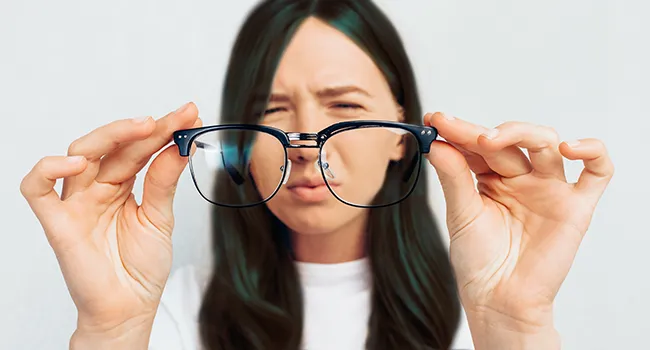Vision impairment is more prevalent than one might assume. It ranks among the most common disabilities affecting both adults and children. Understanding the factors that increase your risk of vision loss is essential, as it enables you to take proactive measures in safeguarding your eye health.
In the following sections, we will examine the leading causes of vision loss and the associated risk factors for each condition.
Raising awareness and providing education about ocular health is one of the ways our local eye care professionals can assist you. To arrange your comprehensive eye examination, please contact us today.
Common Causes of Vision Loss
Glaucoma
Glaucoma encompasses a range of eye disorders characterized by increased pressure within the eye. Excessive intraocular pressure can harm the optic nerve, resulting in vision impairment.
As early-stage glaucoma often presents no symptoms, regular eye examinations become even more vital. Advanced or rapidly worsening glaucoma may exhibit various symptoms, including blurred vision, headaches, intense eye pain and redness, seeing halos around lights, and feelings of nausea.
Risk factors for developing glaucoma include:
– Age 60 or older
– Family history of glaucoma
– African, Asian, or Hispanic ethnicity
– High myopia (nearsightedness) or hyperopia (farsightedness)
– Previous eye injuries or specific eye surgeries
– Use of certain medications, such as corticosteroids
– Thin corneas
– Certain health conditions, including diabetes, hypertension, heart disease, and sickle-cell anemia
Cataracts
Cataracts develop when the lens of the eye becomes opaque. A healthy lens is transparent, allowing light to pass through unobstructed.
Typical symptoms of cataracts include cloudy or blurred vision, difficulty seeing in low light, sensitivity to light, double vision in the affected eye, and a perception of colors as faded or yellowish.
Risk factors associated with the development of cataracts include:
– Aging
– Diabetes
– Hypertension
– Smoking
– Prior eye surgery, trauma, or inflammation
– Alcoholism
– Prolonged use of corticosteroids
– Age-Related Macular Degeneration (AMD)
AMD is the primary cause of significant vision impairment in individuals over 60 years old. It occurs when the macula, the small central area of the retina responsible for clear and vibrant central vision, begins to deteriorate.
The early phases of AMD often go unnoticed; however, as the condition progresses, it may lead to symptoms such as blurred vision, dark or hazy spots in central vision, and difficulties with color discrimination.
Currently, there is no cure for AMD, but certain treatments can assist in preventing further vision loss.
Risk factors for AMD include:
– Smoking
– Obesity
– Aging
– Prolonged exposure to sunlight
– Hypertension
– Heart disease
– Family history of AMD
– Light-colored eyes
– Farsightedness
Diabetic Retinopathy (DR)
Diabetic retinopathy is a complication arising from Type 1 or Type 2 diabetes that impacts the retina, the light-sensitive tissue located at the back of the eye.
In its initial stages, diabetic retinopathy may not present any symptoms, but it can ultimately result in blindness. As the condition progresses, it may lead to an increase in floaters, difficulties with color vision, dark spots in the visual field, and blurred vision.
Risk factors for diabetic retinopathy include:
– Duration since diabetes diagnosis — the longer the duration, the greater the risk of visual complications
– Uncontrolled blood sugar levels
– Obesity
– Elevated cholesterol or blood pressure
– Pregnancy
– Smoking
– Ethnic backgrounds such as African American, Hispanic, and Native American
– Family history of DR
In conclusion, various factors contribute to eye diseases and vision loss, some of which may pertain to you. If you believe you are at risk for vision loss or are experiencing any of the aforementioned symptoms, it is advisable to consult your eye doctor in Waco promptly. Additionally, it is recommended to have comprehensive eye examinations every 1-2 years, or as frequently as advised by your eye care professional.


Tinggalkan Balasan